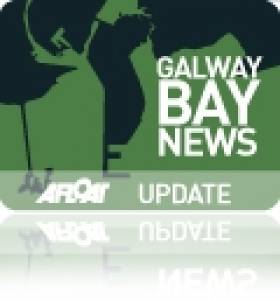Displaying items by tag: high winds
High Winds Cause Cruiseships to Cancel Calls During High Season
High winds played there part in determining cruiseship destinations among visiting vessels that were scheduled to call to Irish and Welsh ports, writes Jehan Ashmore.
Most recently to become subject to the conditions involved Princess Cruises smallest ship, the 670 capacity Pacific Princess which was unable yesterday to anchor safely offshore of Milford Haven in south Wales.
The Bermuda flagged cruiseship continued a passage to Dublin Port and where the 30,000 gross tonnage vessel arrived today. A fleetmate, Crown Princess is also today visiting the Irish capital but unlike the 'Pacific' is to remain in port overnight.
The cancelled call by Pacific Princess to the port in Pembrokeshire had prematurely ended a season which saw three ships visiting. Silverseas Silver Cloud called twice, once in May and June and Hapag Lloyd's Europa made an appearance last month.
A Silverseas fleetmate the 294 guest capacity Silver Wind was the other aptly named cruiseship affected by such weather conditions but which took place in Irish waters.
Silver Wind had arrived in Galway Bay in the early morning of last Friday and sheltered in the lee of Black Head, Co. Clare. Due to the prevailing winds, tenders could not take guests ashore to the Port of Galway forcing the 17,400 gross tonnage vessel to cancel the call.
Instead the Bahamas flagged Silver Wind proceeded to Lisahally (Foyleport) followed by Greenock, Scotland. By coincidence, Silver Wind is today also docked in Dublin Port having previously called to Belfast Harbour.
Despite the cancellation to the Port of Galway a further four cruiseships is scheduled with Fred. Olsen Lines Black Watch ending the season early next month.
Neptune Head of the River is Off
#Rowing: Neptune Head of the River, scheduled for Saturday, November 5th on Blessington Lakes has been cancelled. The organisers say that the forecast of high winds at the venue meant they could not continue with the event. A big part of the entry consisted of junior crews – there were 20 entries in the men’s junior 18 single sculls.
Windsurfer Caught Out by High Winds in Galway Bay
The crew of Galway's RNLI lifeboat were alerted at 4pm on Sunday afternoon after the windsurfer had been caught out by strong north-westerly winds. The man was found uninjured and taken to safety.
Galway RNLI warns that high winds can come up fast in Galway Bay, which can cause difficulties for even experienced sailors or windsurfers.






























































